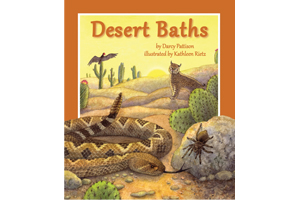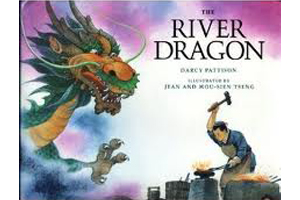I am SUPER excited to have Darcy Pattison as a guest blogger today. She is the author of several books.
Here are just a couple of examples. If you haven't had an opportunity to check out her amazing books, you should do so...ASAP!!!!
Now on to a FABULOUS blog post. I am so excited to start using these tips and ideas in my own classroom. Enjoy reading as Darcy shares her knowledge with us to make great writers of our students.
Writing with 2nd Graders
“Who would like to share what you wrote?” I asked.
A few excited hands went up. Then, a thin girl with shoulder-length brown hair raised her hand.
Startled, the teacher nodded to her. “Yes, read for us.”
The narrative was strong, full of details and voice. I congratulated the girl on her work and asked for other volunteers.
Later, the teacher told me that it was the first time the girl had ever volunteered to read from her work, the first time she had ever felt confident of her work.
The class of twenty students were those identified by teachers as the weakest, those most in need of a boost. Frankly, it doesn’t matter to me if the students are kindergarten or tenth grade, considered weak or strong writers. What matters is getting strong writing. And there are two key elements.
SPECIFIC WRITING IS GOOD WRITING
First, good writing is specific writing. For narratives, I ask students to write the five senses down the side of a page, spreading out the words to fill the space: see, hear, smell, taste, feel (kinesthetic or temperature/texture, NOT emotions). The writers stops to think about the situation they are describing, to mentally go back to that place and remember specific details. For each sense, I require the writer to write at least three specifics.
What makes something specific enough?
Not: dog.
Instead: a German shepherd that limps.
This exercise requires the most specific noun possible, often a proper noun; then, it requires modifiers, so the reader cannot confuse this item with any other. Complete sentences aren’t required, rather words, phrases, clauses—just something to jog the writer when they actually write later.
Of course, what we see and hear are the strongest senses, therefore, the easiest to write. Smell and taste can depend on the situation. For example, when talking about a Christmas feast, smell and taste are easy. Kinesthetic draws on strong verbs, as it details what it feels like to move through space. (Ex. She kicked the silver bucket.) The key here is that students are asked to think about a variety of sensory details and to choose the best details from the possibilities. I encourage the use of at least three different senses in any piece of writing.
Making these “deposits” into a word bank means they can draw from the bank whatever language works in the story. If something else occurs to the writer as they work, they should certainly use it.
This type of prewriting activity puts the emphasis on details where it belongs, up front.
VERBS ARE THE MOST IMPORTANT PART OF THE SENTENCE
Second, the most important word in a sentence is the verb. Strong verbs enliven a piece of writing, while “to be” verbs make it static. This can be implemented as a prewriting or a revision strategy. Either way, writers should focus on strong verbs.
Not: The man walked across the room.
Instead: The man limped across the room.
Avoid weak adverbs.
Not: The man walked slowly across the room.
Instead: The man limped across the room.
In the second sentence, we see the reason for the slow progress across the room. As a general rule of thumb, I don’t allow adverbs or adjectives UNTIL the writer has first used the strongest verb or noun possible.
Does it sound too simplisitic? For narratives, does it just take the use of sensory details and strong verbs to produce a good paper? Yes, it is that simple. These two things make the more difference in student writing than anything else you can do: specific details and strong verbs.
--
Children’s book author and writing teacher, Darcy Pattison (darcypattison.com) is published in eight languages. She runs the book review sites and 2ndGradeReading.NET, 3rdGradeReading.NET. Coming soon are 4thGradeReading.NET and 5thGradeReading.NET. Also check out her TpT store at http://www.




No comments:
Post a Comment